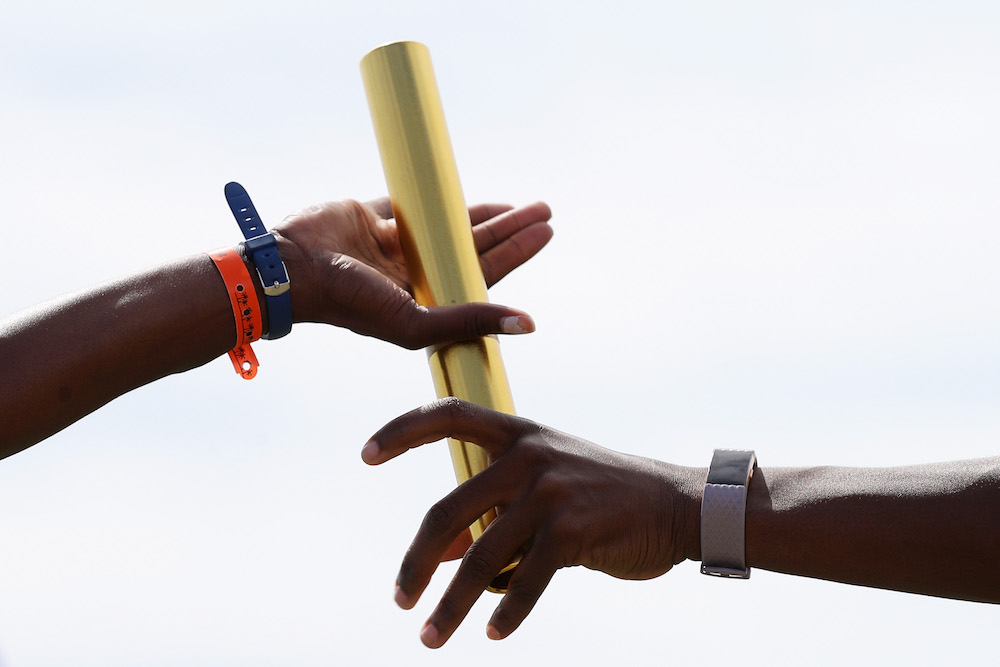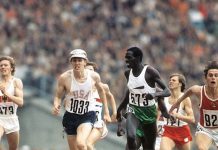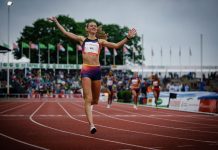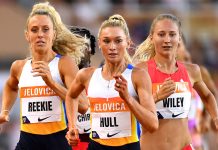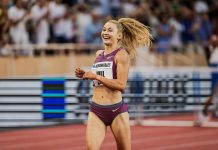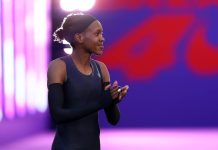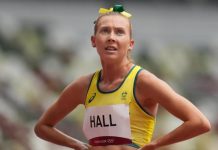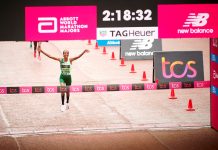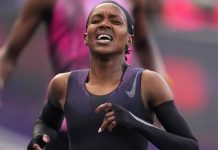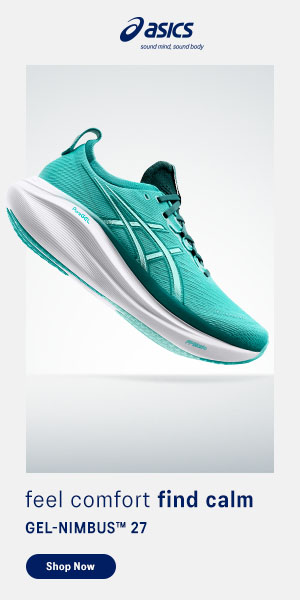Some of the world’s finest sprinters joined IAAF CEO Olivier Gers and local dignitaries at the official pre-competition press conference on the eve of the IAAF/BTC World Relays Bahamas 2017 to share their thoughts, enthusiasm and aspirations about the IAAF’s newest World Athletics Series event which this weekend (22-23 April) celebrates its third edition.
More than 500 athletes from 35 teams, including an Athlete Refugee Team (ART), have assembled in the Bahamian capital, vying for a share of the US$1.26 million prize pot, ownership of the Golden Baton trophy and qualification spots in the men’s and women’s 4x100m and 4x400m at the IAAF World Championships London 2017.
“To me, the Relays are a great new dimension for our sport,” Gers said, addressing media gathered at the British Colonial Hilton in Nassau. “It’s really about taking extremely high-performing athletes who are used to performing individually and putting them in a team environment.
“For the athletes it’s a challenge to getting together and competing as a team. For the coaches it’s a challenge to create that team spirit. For the fan, beyond the question of ‘Will the baton make it around the oval?’, there’s the added tactical and tribal story from the team experience.”
No teams know more about that “team experience” than members of the US squad assembled in Nassau who’ll be defending their back-to-back overall World Relays titles.
“We’ve definitely come to defend our title, not only in the 4×400 but also the Golden Baton for the entire team,” said Natasha Hastings, the team’s unofficial ‘Relay Queen’, who’s amassed 17 relay medals in various global championships over her stellar career, 15 of them gold.
Her teammate Ashley Spencer, the 2016 Olympic bronze 400m hurdles bronze medallist, shared Hastings’ confidence.
“As far as our strategy to (defend our title): no comment. All I will say is that we’re all ready to run, we’re all ready to compete. It’s going to be a good relay meet.”
And, in many respects, a ground-breaking one as well.
Innovations unveiled
“The World Relays have always been about innovation, and innovation in our sport,” Gers said. “This year the innovation doesn’t stop.”
New on this year’s programme is the first mixed 4x400m relay, the race that will cap the competition on Sunday night. The weekend will also feature the introduction of news ways in which the event will be delivered.
“We’ll have an on-body camera worn by members of the 4x800m Athlete Refugee Team which will be providing an incredible perspective,” Gers said. Drone footage will also be utilised for the first time at the Relays as well.
In addition, the event will streamed to more than 120 countries around the world via Youtube and Facebook, Gers said, “to give fans the ability to share the athletes stories.” [click here for list of broadcasters | click here for live stream territories ]
Hosts: ‘We have found our niche in athletics’
More immediately in charge of the event’s delivery will be The Bahamas, hosts of the event for the third time at Nassau’s Thomas A Robinson Stadium. Rosamunde Carey, BAAA President and CEO of the Local Organising Committee, promised that her colleagues were once again up to the task.
“We’re a small island nation with a population of just over 350,000, an island nation that produces and continues to produce some of the best elite athletes in the world,” Carey said.
“We believe that we have found our niche in athletics, and that niche is in hosting the most renowned, excitement-filled and talent-packed relays you will ever experience.
“We guarantee that this will be the best one yet,” Carey said. “We will showcase the most innovative designs for these world relays. From the moment you step into the Thomas A Robinson Stadium, and witness the amazing transformation that has taken place, the excitement builds.”
To anyone who’s already witnessed the World Relays, they’ll be familiar with the electric atmosphere expected to fill the stadium. Among them is local star Anthonique Strachan, a former world junior 100m and 200m champion who’ll contest the mixed 4x400m.
“The crowd support is going to be really nice,” Strachan said. “They’re always very attentive and reactive. In my opinion we have the liveliest crowd ever.”
That crowd will provide ample motivation to Shaunae Miller-Uibo, the recently-minted Olympic 400m champion and at the moment, the host nation’s biggest sporting star. She relishes being a source of that motivation.
“We’re a small country but we’ve got so much heart within us,” said Miller-Uibo, also a member of the mixed relay squad. “We carry the entire Bahamas on our back every time we step on the track. Each time we come out we try to not only motivate ourselves but others too.”
‘Our business is entertainment’
And in the meantime, to provide an entertaining package that meets the wishes of the sport’s fans, too.
“It’s not an accident that we’re here for a third time in Nassau, Bahamas,” said IAAF Ambassador Ato Boldon. “The first two events were spectacular. Our fans, the people who drive our sport, continue to tell us they want to see more relays.”
That fits well into part of the IAAF’s mission, as Gers highlighted during his opening remarks.
“Our product is athletics but our business is entertainment,” he said.
That’s not lost on Hastings, whose colourful fashion style has made her one of the more popular 400m runners in the world.
“This is my job,” she said. “And I feel like whether I was working in corporate America or on the track, you would never show up on the job not looking the part. I’m going to be on TV, I’m entertainment, I’m going to look cute,” she said, breaking into a laugh.
“The other thing is, as much vanity as it is, it’s actually something that’s a part of my routine. As you can imagine, before you go out to perform you’re nervous. And me putting my make up on gives me something to do with my hands and kind of take my mind away from what I’m about to do.”
Spencer wholeheartedly agrees.
“Another common misconception is that female athletes aren’t feminine, and we want to break the stereotype, we want to look feminine,” said Spencer. “I can rock a pair of heels just like I can rock spikes around 400 metres. Especially going over hurdles.”
Bob Ramsak for the IAAF


